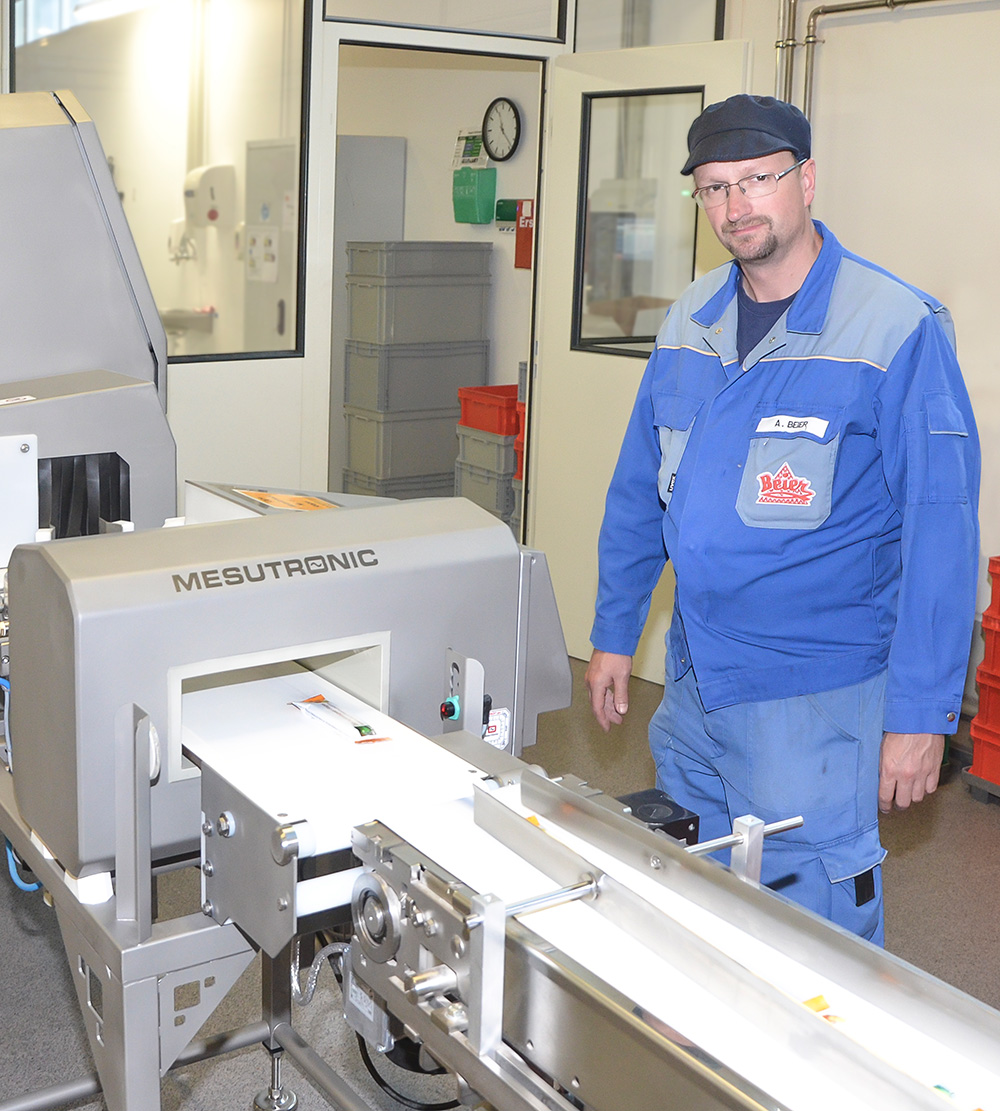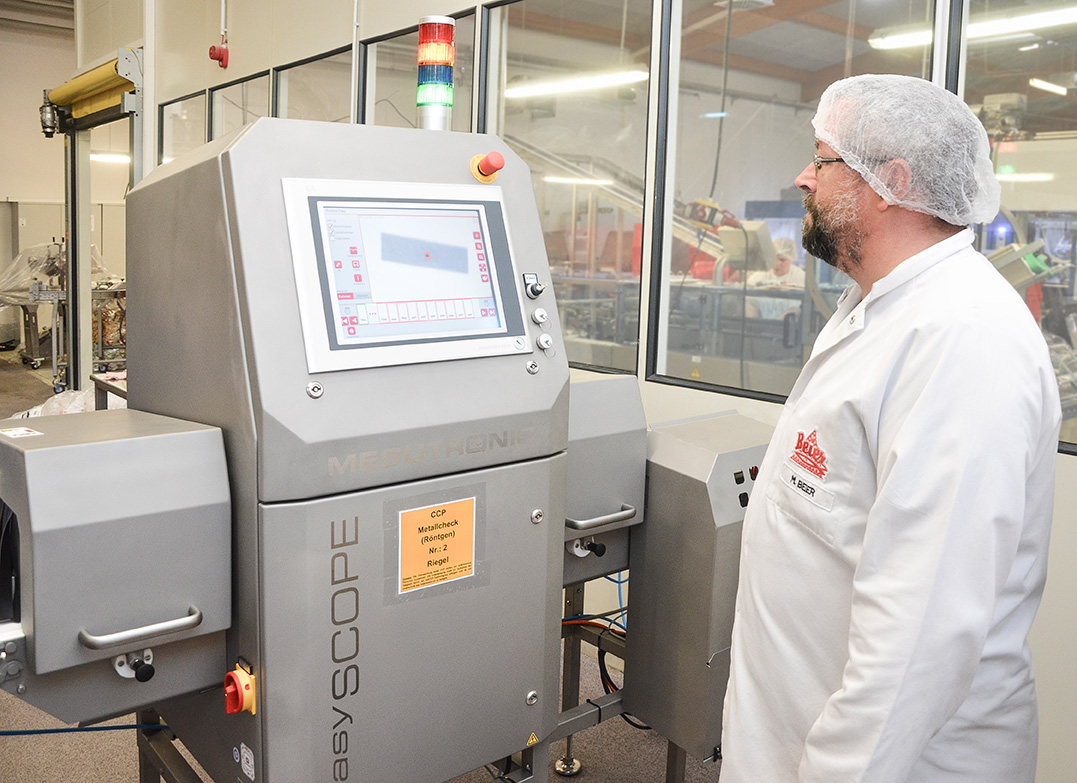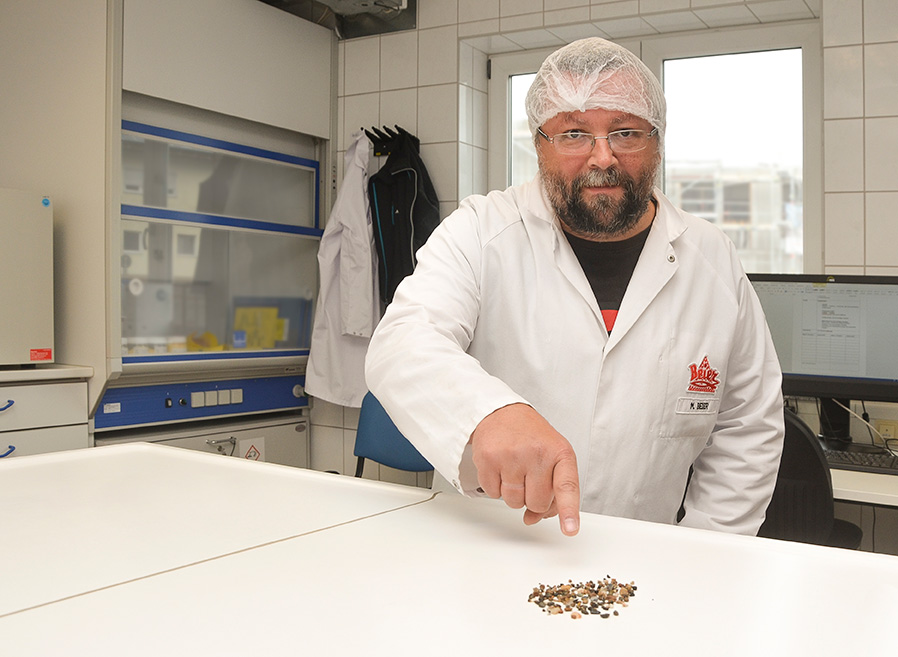News
Four-eyes principle regarding contaminant checks
Extensive safety by means of combining metal detectors and x-ray scanners at the works of the Bavarian confectionery production company Otto Beier Waffelfabrik GmbH.
The high-tech safety technology provided by the company Mesutronic is currently ensuring contaminant-free end products at Otto Beier Waffelfabrik GmbH in Miltach/Upper Palatinate (Cham district). Modern metal detectors and x-ray scanners are utilised to check around one million cereal bars per week, before these are stocked on shop shelves.
Quality as a tradition
There is an aromatic scent in the air of the production hall: Up to 100 different raw materials, such as dried fruit, nuts or cereals are added to the cereal bars. “In order to ensure that our end consumers only have access to clean products, we have taken precautions by way of a double safety system,” says Markus Beier (43), Commercial Managing Director of Otto Waffelfabrik GmbH, which applies strict criteria in terms of the respective quality. This is in line with a tradition, which has been practised for more than 80 years.
And today more than ever, as a number of fruit and cereal bars are being produced for reputable manufacturers, in addition to the waffle products and foamy sugar goods produced and sold from the own brand. In this context, the company Beier is consulted as a specialist, especially in terms of products associated with organic goods, baby quality or sustainability.
The risk of contamination
The company Beier only utilises the best possible raw materials. But by processing natural products, there is always a risk of production contamination by various means. Amongst other things, Beier buys approximately 3,000 tons of fruit per year: “It is normal that during harvest, stones, metal particles or pellets from hunters may get into the raw material,” according to Markus Beier. Nutshells also pose an unavoidable risk in terms of raw materials. The company Beier decided to explore as to how the safety of the end consumer could be further improved. In principle, it is possible to apply two established processes in order to check the respective end products, x-ray checks and inductive metal detection.
X-ray inspection systems – versatile and innovative
X-ray detection is an imaging process. The radiation produced by the x-ray generator is transformed into an image by means of the diode array in the receiver and a processing unit. The product to be checked blocks part of the radiation and is therefore illustrated by means of various shades of grey. An increase in density, thickness and atomic mass reinforce this effect, the image will become darker and darker. The respective contaminations, such as most metals, glass, high-density plastic or stones have a high density and atomic mass. Therefore, they can be clearly distinguished from the surrounding product, even in case of a relatively low level of thickness, and may therefore be identified. However, very thin metallic contaminations, such as fine shearing or metallised foil may be problematic. If not enough radiation is absorbed, the contamination cannot be recognised by the scanner’s image-processing algorithms.
Inductive metal detectors – tried and tested specialists
Metal detectors, which work in line with the so-called “balanced coil” principle, are able to check products by means of an alternately poled magnetic field, which induces electric tension in the receiving coils. You will be able to identify metallic contaminations on the basis of electric conductibility and magnetic permeability. It is even possible to identify contaminants with a low density or thickness. However, thin metallised packaging components may, in turn, lead to a reduction in the general level of detection.
Especially in terms of the products of the Firma Beier, which are to be well checked, the level of detection achieved by the metal detector in regard to iron and aluminium particles is generally better than the results achieved by the x-ray scanner. Regarding the utilisation of metallised packaging components, this is more difficult. For these products, x-ray scanners are almost always superior in regard to metals.
Risk evaluation and identification of solutions
Due to the various unavoidable risks concerning raw materials, and following a HACCP-compliant risk evaluation, the only suitable tool for contaminant checking appeared to be x-ray technology. This technology identifies the broadest range of contaminants within the finished products. Furthermore, the technology offers additional quality assurance tools, such as counting options or checks for breakage. Following the finding, a suitable partner was to be identified. “We decided to go with the easyScope x-ray inspection systems provided by Mesutronic GmbH. They were able to offer an optimum compromise in regard to user friendliness and detection accuracy, the implementation project and respective start-up were carried out without any problems,” says Alexander Beier (45), Technical Managing Director of Otto Beier Waffelfabrik GmbH.

Double safety at the line – Alexander Beier in the process of checking the equipment installed by Mesutronic
The silver bullet – combining technologies and protecting consumers
In order to protect consumers as best as possible, the company Beier not only decided to invest in modern x-ray systems, but also to combine both processes. All lines were furthermore equipped with Metron 07 CI tunnel metal detectors. The metal detection systems specialise in all types of metallic contaminations.
Firstly, and as far as possible, they remove all bars, which are contaminated with pellets, shearing as well as pieces of wire or similar items. The x-ray systems, in turn, specialise in non-metallic contaminations, such as stones, shells or glass. They also improve the detection performance in terms of products with metallised packaging. Per line, up to 600 bars per minute are forwarded to secondary packaging as well as delivered to shops and, finally, end consumers. And all this with a certain advantage in regard to quality, which both the company Otto Beier Waffelfabrik GmbH, as well as Mesutronic GmbH vouch for.

